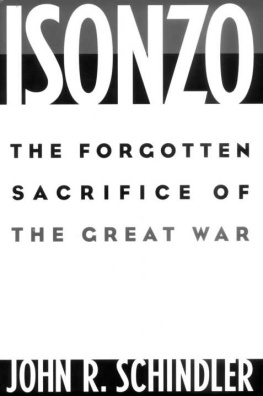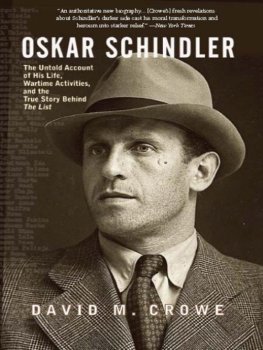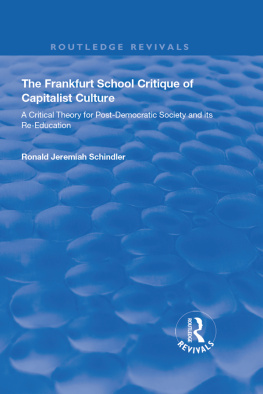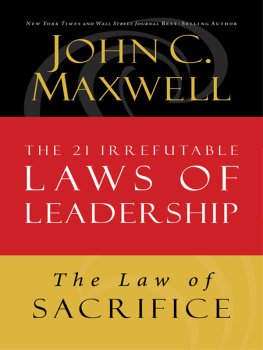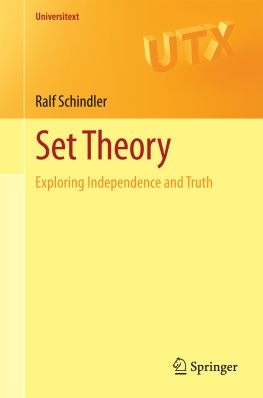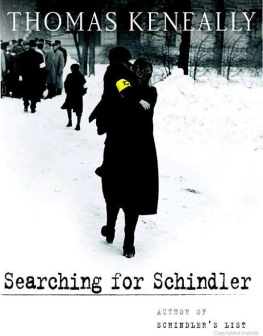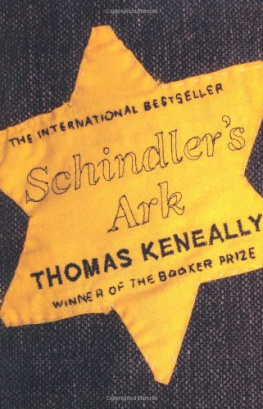John R. Schindler - Isonzo: The Forgotten Sacrifice of the Great War
Here you can read online John R. Schindler - Isonzo: The Forgotten Sacrifice of the Great War full text of the book (entire story) in english for free. Download pdf and epub, get meaning, cover and reviews about this ebook. year: 2001, publisher: Praeger, genre: Politics. Description of the work, (preface) as well as reviews are available. Best literature library LitArk.com created for fans of good reading and offers a wide selection of genres:
Romance novel
Science fiction
Adventure
Detective
Science
History
Home and family
Prose
Art
Politics
Computer
Non-fiction
Religion
Business
Children
Humor
Choose a favorite category and find really read worthwhile books. Enjoy immersion in the world of imagination, feel the emotions of the characters or learn something new for yourself, make an fascinating discovery.
- Book:Isonzo: The Forgotten Sacrifice of the Great War
- Author:
- Publisher:Praeger
- Genre:
- Year:2001
- Rating:5 / 5
- Favourites:Add to favourites
- Your mark:
- 100
- 1
- 2
- 3
- 4
- 5
Isonzo: The Forgotten Sacrifice of the Great War: summary, description and annotation
We offer to read an annotation, description, summary or preface (depends on what the author of the book "Isonzo: The Forgotten Sacrifice of the Great War" wrote himself). If you haven't found the necessary information about the book — write in the comments, we will try to find it.
Isonzo: The Forgotten Sacrifice of the Great War — read online for free the complete book (whole text) full work
Below is the text of the book, divided by pages. System saving the place of the last page read, allows you to conveniently read the book "Isonzo: The Forgotten Sacrifice of the Great War" online for free, without having to search again every time where you left off. Put a bookmark, and you can go to the page where you finished reading at any time.
Font size:
Interval:
Bookmark:


of the Great War
JOHN R. SCHINDLER



For the soldiers of all nationalities who were sacrificed on the Isonzo
ix
xi
An unnumbered photo section follows chapter 9.
This book is the result of several years' work in a half-dozen countries, four archives, and more than two dozen libraries and museums, not to mention much up-close, old-fashioned investigation of forgotten battlefields. To cite, and thank, all the institutions and individuals that assisted me in my research would be impossible. That said, several people and places cannot justly go unnoted.
Among institutions, the Austrian Staatsarchiv in Vienna, particularly its famed Kriegsarchiv, was preeminent in my piecing together of the Isonzo story; two of its officials, Hofrat Dr. Peter Broucek, Deputy Director, and Rat Mag. Dr. Wolfgang Kuderma, Referent for First World War records, assisted me considerably. Acknowledgments are likewise due to several people who helped me at various points in the research and writing of this project, with everything from archival and linguistic matters to more mundane but no less vital computing and editorial issues. In North America: the ever encouraging Dr. John P. Campbell, Dr. Gabriele Erasmi, my friend and factotum G. Bruce Strang, my most helpful editor Heather Staines, and Dr. Geza Schay, not to mention Dr. Mark R. Peattie, who dispatched me down this road several years ago; in Europe: Vera Ivancic, Luigi Berlot, Dr. Klaus Schafer, and Dragan Merran, as well as countless Slovenes and Italians who helped a wayfaring scholar trying to track down long-forgotten mountains, monuments, trenches, and cemeteries.
No less, I would like to express my gratitude to my mother, Dawn, for her unfailing support of this undertaking. Thanks are likewise due to my late father, Richard, who instilled in me a love of history and scholarship, as well as a healthy interest in the subject of war-composed of equal parts fascination and loathing-that he learned during three tours in Vietnam. And my wife, Tracey, deserves special thanks for her kind support of me and this book through many long months, during which she doubtless felt she was the last victim of the Isonzo battles. Last, but assuredly not least, I wish to thank B.D.M., who made everything possible.
John R. Schindler
The Isonzo River flows through one of the loveliest valleys in Europe. The cold and fast-moving Isonzo begins high in the Julian Alps, in Slovenia's forbidding Triglav National Park, barely more than an azure-hued mountain stream. As the winding blue-green water follows its course south to the Adriatic Sea, between snowy Alpine peaks and densely forested hills, past a dozen sleepy Slovene towns and villages long forgotten to history, it slowly widens and darkens in color. Once the river has reached the Italian border at the city of Gorizia, fifty miles downstream from its source, the Isonzo's pace has slowed, its depth has doubled, and its width has trebled. On its banks, the mountains have become mere hills, and the Slovene towns have been replaced by bustling Italian industrial cities. The last miles of the Isonzo's course before it reaches the head of the Adriatic take the river west, to the edge of the Friulian plain. Where the Isonzo disappears into the sea, the city of Trieste and its surrounding hills are clearly visible to the east.
The almost unknown Isonzo is notable for several reasons. Geologically, the Julian Alps, which overlook and give birth to the river, are the European watershed between the Mediterranean and the Black Sea. Ethnically, the Isonzo has served as the dividing line between Latin and Slavic Europe for centuries; the population to the west of the river is mostly Italian, and to the east it is largely Slovene. Politically, ,the Isonzo valley has divided Italy from several of its northeastern neighbors throughout the twentieth century: Habsburg Austria, followed by Tito's Yugoslavia, and now the Republic of Slovenia. Yet the Isonzo is hardly well known because of these attributes. Instead, the river is now noted, if at all, for its beautiful color and its excellent white water sports, particularly in its mountainous upper half. The stunning scenery attracts a modest number of Italian tourists, especially in the summer. The tourists come, often for only a day, to enjoy the Isonzo's beauty and the affordable prices of newly independent Slovenia. Tourism is an overwhelmingly local phenomenon; it is difficult to encounter a visitor who is not Italian, Slovene, or Austrian. Even fewer tourists still will notice the faded monuments perched by the roadside, the overgrown trenches hiding behind houses, or the occasional partially obscured cemetery near the river's edge. The Isonzo's tragic recent past has been all but totally forgotten.
Earlier in the twentieth century, the river's name evoked horror and sorrow. Throughout Europe and North America, the name Isonzo stood alongside Verdun and the Somme in the collective memory of needless sacrifice of the First World War. The terrible bloodletting that scarred France and Flanders and shattered the lives of millions did not spare the Isonzo. From May 1915 to October 1917, the Italian Army attempted to break the Austro-Hungarian defensive line on the Isonzo and to advance deep into the Central European heartland. A series of eleven major Italian offensives proved futile, winning only a few miles of worthless trenches and hills. Countless regiments of both armies were sacrificed in pointless battles for useless objectives. The cost was unprecedented. Twenty-nine months of fighting on the Isonzo cost Italy 1,100,000 soldiers dead and wounded. The Austrians, desperately holding on to every inch of ground, lost 650,000. The Italians finally crossed the Isonzo in triumph only in November 1918, at the Great War's end, following Austria-Hungary's complete political collapse. It was at best a Pyrrhic victory. More than any other front of the Great War, the war on the Isonzo was noted for the harshness of the terrain, the viciousness of the fighting, and the relentless cycle of disastrously failed offensives. For Italians and Central Europeans of a dozen nationalities, the Isonzo symbolized the terrible cost and utter futility of the First World War. The bloody battles fought on the Isonzo's banks, the centerpiece of the Austro-Italian struggle, constituted a needless campaign in a needless war. The Isonzo's impact on twentieth-century Italy and Central Europe has been politically, socially, and culturally immense.
Yet, surprisingly, the Isonzo has almost entirely disappeared from historical consciousness. The handful of impressive war memorials in the valley have few visitors today, and the dozens of smaller cemeteries are now mostly forgotten. For the Italians, the horrible cost and sad futility of the fighting on the Isonzo represent an inglorious, and perhaps embarrassing, chapter in the history of Italian arms; the political use of the memory of the Isonzo by Mussolini's Fascist regime has further obscured the bloody river's legacy in modern Italy. For the Slovenes, on whose territory most of the fighting took place, the Great War inevitably seems part of an increasingly distant historical past. And the Austri ans and other Central Europeans pay little attention to the Isonzo fighting today, viewing it as a legacy of a defunct empire and an irrevocably lost age. Who in the age of the European Union and continental unity can imagine Italians and Central Europeans killing each other in the hundreds of thousands for a minor Alpine river'? Across the Atlantic, the memory of the Isonzo, never strong, has disappeared entirely. Few historians, much less average citizens, have ever heard of the river or the terrible events that happened there more than eight decades ago. The river is remembered vaguely, if at all, for its fictional appearance in Hemingway's A Farewell to Arms. Even specialists in military history and the history of twentieth-century Europe make little mention of the Isonzo or its impact on the modern world. For most English-language historians, battles and campaigns of the Great War that did not happen on the Western Front or involve English-speaking troops apparently are not worth exploring. Thus the Isonzo, the worst campaign of the First World War, not to mention one of the most historically significant, has been forgotten.
Font size:
Interval:
Bookmark:
Similar books «Isonzo: The Forgotten Sacrifice of the Great War»
Look at similar books to Isonzo: The Forgotten Sacrifice of the Great War. We have selected literature similar in name and meaning in the hope of providing readers with more options to find new, interesting, not yet read works.
Discussion, reviews of the book Isonzo: The Forgotten Sacrifice of the Great War and just readers' own opinions. Leave your comments, write what you think about the work, its meaning or the main characters. Specify what exactly you liked and what you didn't like, and why you think so.

